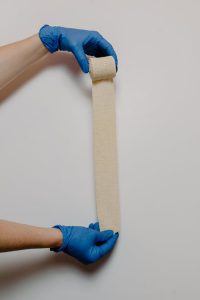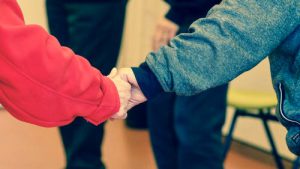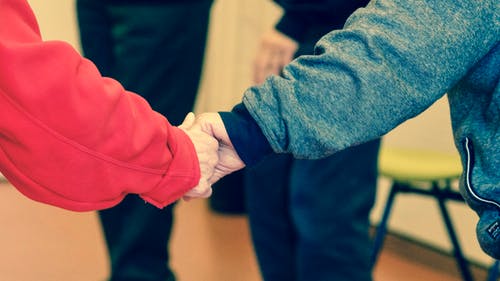Table of Contents
Who are caregivers?
A caregiver is a person who takes care of a sick person for a certain amount of money. Today, hiring an assistant is a common situation, as many relatives do not have the opportunity to care for a sick person around the clock.
But in order to make the right choice of personnel, you need to know what a nurse’s responsibilities are.
The list of duties depends not only on the qualifications of the employee, but also on the severity of the health condition of the person for whom the personnel is hired.
Caregivers first Aid Kit Set – The Basics
The main duty of a caregiver for an elderly person and disable is to monitor their health and provide assistance with care and movement.
What are some common ailments that can benefit from first aid kit set
that might not be obvious to a new caretaker?
From my own experience, Helping a disabled person and elderly people is an extremely difficult caregiver job, which includes a serious responsibility.
Caring for an elderly or disabled person includes preparing and observing a diet, various household and hygienic assistance .
The caregiver’s first aid kit of a disabled person strongly influences the types of care they need.
whoever the patient is, caregivers must have first-aid kit.
First aid kit SET Products?
Sterile and non-sterile bandages, cotton wool, bactericidal and fixing adhesive plasters, elastic bandages. Hemostatic tourniquet.
Antiseptic agents for treating wounds from cuts and abrasions: alcohol solution of iodine 5%, brilliant green solution (“brilliant green”), hydrogen peroxide solution 3%, potassium permanganate (potassium permanganate).
When fainting :ammonia solution 10% – ammonia.
Means for burns: “Panthenol” or “D-Panthenol” in any form: ointment, cream, spray or aerosol.

Nitroglycerin preparations (nitrates). Vasodilators. They are used for attacks of angina pectoris, they act quite quickly, but they are also effective for a short time. There are contraindications for use.
ACE inhibitors. Medicines to lower blood pressure. They can be called the most prescribed supplements for hypertensive patients, as well as for people with chronic heart failure.
Suitable for long-term use, but the appearance of side effects is possible: allergic reactions, dry cough are possible.
Antispasmodics:(pills that relieve muscle spasm of internal organs).
Remedies: The most famous remedy for cleansing the body is activated carbon. A caregiver person’s first aid kit should have a sufficient amount of this drug. The dosage for taking activated charcoal depends on the person’s weight: 100-200 mg per 1 kg.
Medical devices:
Such devices include a tonometer and a thermometer. They must be in an elderly person’s first aid kit. Try to get modern, safe, easy-to-use measuring instruments.
If an elderly person has diabetes, then we add a glucometer – a medical device for measuring blood sugar levels and accessories for it.
Also, if necessary, in case of diseases of the upper respiratory tract, you can add an inhaler or a more modern variation of it to the first aid kit – a nebulizer.
Pulse oximeter – a device for measuring saturation (blood oxygen saturation)
Should caregivers have a first-aid kit available at all
times, or only in certain situations?
If your ward woke up in the middle of the night with a fever, heart attack, stroke, strong pain, joint pain, burned yourself with hot steam from a kettle, hit and twisted your leg.
In the fall or spring, many elderly people get sick with influenza and SARS, and in the summer with rotavirus.
However, the person can feel bad in the middle of the night, so the caregiver will not have time to get up, get dressed and walk to the 24-hour pharmacy.

Getting a home first aid kit is much easier. There are always supplements and medical products in it, with the help of which it will be possible to hold out until the doctor arrives.
A good place to place a first aid kit box would be a closet in an elderly person’s room or in a hallway. This way, the first-aid kit will be hidden both from children’s eyes and from external factors that affect its safety.
But at the same time, it is necessary to take into account its availability in emergency cases for the person himself – do not put the first-aid kit on the uppermost shelf.
So, find a place where a First-aid kit MUST BE available at all times.
Some medicines can only be kept in the refrigerator.
Should caregivers receive special training or certification in CPR or other life-saving techniques?
The caregivers job requires patience and tact, as well as preferably must have a nursing diploma, special medical skills( CPR, The Heimlich maneuver, timely injections of the supplements), be able to stop severe bleeding and knowledge of psychology and geriatrics.
There must be the ability to find an approach even to the most difficult characters, responsibility, attentiveness, optimism and honesty – these are the main qualities of a good nurse.
And, of course, time – elderly people, like small children, sometimes cannot take care of themselves on their own, they need help even in the simplest daily activities.
Is there any other advice or information you could provide about the importance of first-aid for caregivers?

First Aid Kit Set – Personal Advice
My personal advice is to remember that most medicines have a shelf life of two to three years. If you have not used the funds from the first aid kit during this period, they will have to be thrown away.
In order not to waste money, it is better to make up each group of supplements from one or two “copies”, no more.
My Final Words
I recommend that you put a spare set of medicines and dressings in your medicine cabinet.
Two or three bandages of different sizes, more adhesive plasters, two thermometers, several antiseptics and two types of antipyretic.
